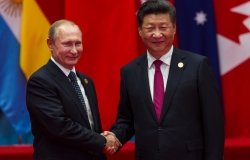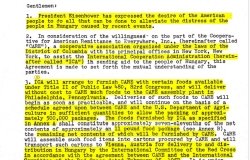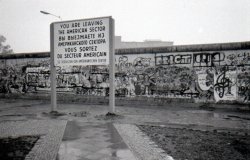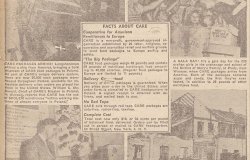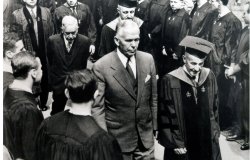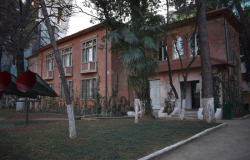North Korean Pilots in the Skies over Vietnam
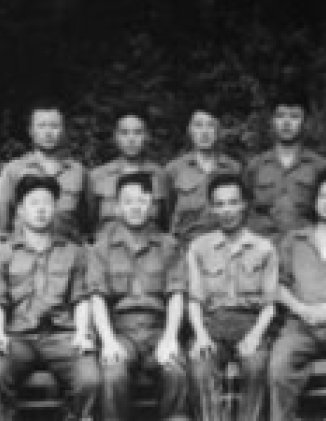

Introduction
In 2000, twenty-five years after the Vietnam War ended, both North Korea and Vietnam admitted for the first time that, as had long been rumored but never before officially confirmed, North Korean pilots had flown in combat against U.S. aircraft over North Vietnam during the Vietnam War. No further details of North Korea’s involvement were provided, however, and subsequently very little information has been provided. An official Vietnamese military history published in 2001 contained only the following general statement: “Under the terms of an agreement between Korea and Vietnam, in 1967 a number of pilots from the Korean People’s Liberation Army were sent to Vietnam to provide us training and the benefit of their experience and to participate in combat operations alongside the pilots of the People’s Army of Vietnam. On a number of flights Korean pilots scored victories by shooting down American aircraft.”[1] Vietnamese military histories usually refer only to an unidentified regimental-sized flying unit called “Group Z” [Doan Z]. Except in a few isolated instances, these histories provide no information about the exact size, composition, or activities of the mysterious “Group Z,” except that it was based at Kep Airfield northeast of Hanoi from early 1967 through 1968. An article published in a Vietnamese newspaper in August 2007 reported that in 2002 the bodies of the 14 North Korean Air Force personnel killed during the Vietnam War had been buried in a cemetery in Vietnam’s Bac Giang Province and had been disinterred and repatriated to North Korea. In a letter to the newspaper to correct several mistakes made in the original article, a retired North Vietnamese major general who had worked with the North Koreans revealed that a total of 87 North Korean Air Force personnel had served in North Vietnam between 1967 and early 1969, during which time the North Koreans had lost 14 men and had claimed to have shot down 26 American aircraft.[2]
According to the documents below, taken from an official People’s Army of Vietnam (PAVN) historical publication, on 21 September 1966 an official North Korean request to be allowed to send a North Korean Air Force regiment to help defend North Vietnam against U.S air attacks was officially reviewed and approved by the Vietnamese Communist Party’s Central Military Party Committee, chaired by General Vo Nguyen Giap. During subsequent discussions held 24-30 September 1966 between a PAVN delegation headed by the Chief of the PAVN General Staff and a North Korean military delegation headed by the Chief of the North Korean General Staff, a detailed agreement was worked out for the dispatch of a North Korean Air Force contingent to fight in North Vietnam. The agreement stipulated that the North Koreans would provide pilots for one North Korean Air Force regiment consisting of two companies (ten aircraft each) of MiG-17s and one company of MiG-21s, while Vietnam would provide the aircraft and all necessary technical equipment, maintenance, and logistics support for the North Korean flyers. The agreement included a timetable for the phased arrival of the individual North Korean flight companies and specified that the North Korean units would operate under the command and control of the North Vietnamese Air Defense Command.
Merle L. Pribbenow graduated from the University of Washington in 1968 with a bachelor's degree in political science. He then joined the CIA and served in South Vietnam as a Vietnamese language specialist for five years (1970-1975). He is now an independent researcher/author specializing in the Vietnam War.
Footnotes
[1]. Military History Institute of Vietnam, Lich su khang chien chong My, cuu nuoc, 1954-1975, Tap V: tong tien cong va noi day 1968 [History of the Resistance War Against the Americans to Save the Nation, 1954-1975, Volume V: The 1968 General Offensive and Uprising], People’s Army Publishing House, Hanoi, 2001, page 271.[back]
[2]. Tuoi Tre Weekend Edition, 17 August 2007 (http://tuoitre.vn/Tuoi-tre-cuoi-tuan/273979/14-chien-binh-Trieu-Tien-tren-bau-troi-Viet-Nam.html) and Tuoi Tre online newspaper, 28 August 2007 (http://www.tuoitre.com.vn/Tianyon/Index.aspx?ArticleID=275879&ChannelID=119) [back]
Document 1
Excerpt from The General Staff During the Resistance War Against the United States, 1954-1975: Chronology of Events (Biên niên sự kiện BTTM trong KCCM 1954-1975), official People’s Army of Vietnam (PAVN) publication. Obtained and translated for NKIDP by Merle Pribbenow. Accessed 30 November 2011 at http://www.vnmilitaryhistory.net/index.php/topic,5366.0.html
[Click to view the document in the Wilson Center's Digital Archive]
General Vo Nguyen Giap’s Decision On North Korea’s Request to Send a Number of Pilots to Fight in Vietnam
21 September 1966
During a meeting of the Current Affairs Committee of the Central Military Party Committee, Comrade Phung The Tai, the Commander of the Air Defense-Air Force Command, reported that our allies had requested permission to send a volunteer air force unit to fight in Vietnam. The request stated that their personnel would be organized into individual companies that would be integrated into our air force regiments, that they would wear our uniforms, and that they would operate from the same airfields as our air force. Our allies said that they could send a large number of technical [support] personnel but that we would be totally responsible for providing ground technical support and for providing supplies for their unit.
After a discussion by the Current Affairs Committee of the Central Military Party Committee, as the presiding officer Comrade Vo Nguyen Giap reached the following decision: The North Korean air force personnel would be called “specialists” but in reality they would be volunteer soldiers. For that reason, we had to agree to respect our allies but at the same time we had to maintain our own sovereignty. During the course of their training and combat operations, we had to clearly delineate their area of operations and assign them both a primary and an alternate airfield. With regard to command arrangements, we would be their superiors, but within the allied [North Korean] regiment they would directly command their own forces with the assistance of representatives from our side, who would give them their specific operational missions. General Giap demanded that coordination arrangements between the two sides must be very clear and precise to avoid any unfortunate complications in the future.
Document 2
Source: Vietnam Ministry of Defense Central Archives, Central Military Party Committee Collection, File No. 433. Obtained and translated for NKIDP by Merle Pribbenow.
[Click to view the document in the Wilson Center's Digital Archive]
Signing of a Protocol Agreement for North Korea to Send a Number of Pilots to Fight the American Imperialists during the War of Destruction against North Vietnam
30 September 1966
Following the agreement in principle between the Labor Party of Vietnam and the Korean Workers’ Party, to implement the guidance issued by the Current Affairs Committee of the Central Military Party Committee on 21 September, from 24 to 30 September 1966 Vietnamese military representatives led by Chief of the General Staff Van Tien Dung and North Korean military representatives led by Chief of the General Staff Choi Kwang held talks in an atmosphere of honesty and sincerity and then signed a protocol agreement covering the following six concrete points:
1. - In late October or during November 1966 North Korea would send Vietnam enough specialists to man a Vietnamese MiG-17 company (a company consisted of ten aircraft). In late 1966 or early 1967, after Vietnam had prepared sufficient aircraft, North Korea would send enough specialists to Vietnam to man a second Vietnamese MiG-17 company. During 1967, after North Korea finished preparing specialists and after Vietnam was able to prepare sufficient aircraft, North Korea would send to Vietnam sufficient specialists to man one Vietnamese MiG-21 company.
2. - To facilitate internal administration and combat command, the North Korean specialists would be organized into individual companies, and eventually into a regiment. Prior to the formation of the regiment, the North Korean specialist companies would be assigned to a Vietnamese air force regiment and would be deployed to that regiment’s airfields.When the Korean side had its full complement of three flying companies, a North Korean regiment would be organized and the regiment would be assigned its own separate airfield.
3. - The specialist companies assigned to the Vietnamese air force regiment would be subordinate to the regiment headquarters and would be under the guidance and direction of Vietnam’s Air Defense-Air Force Command.
4. - Coordination between air force units and between the air force and anti-aircraft artillery and surface-to-air missile units would be carried out under the guidance and direction of Vietnam’s Air Defense-Air Force Command.
5. - All command and technical support, such as communications and technical support and maintenance of the aircraft would be provided by the Vietnamese side.
6. - North Korea would provide the basic technical and tactical training to the specialists in North Korea. After their arrival in Vietnam, Vietnam would only provide them with the on-the-job training necessary to adapt to the battlefield conditions, weather conditions, and their battle opponents.
In addition, the protocol also laid out the agreement on providing housing, living supplies, transportation equipment, medical support, policy regulations [death, injury, sickness, discipline], and commendations and awards.
About the Author
Merle Pribbenow
Merle L. Pribbenow II graduated from the University of Washington in 1968 with a bachelor's degree in political science. After serving in the CIA for 27 years, he retired in 1995 and is now an independent researcher/author specializing in the Vietnam War.
Read More
North Korea International Documentation Project
The North Korea International Documentation Project serves as an informational clearinghouse on North Korea for the scholarly and policymaking communities, disseminating documents on the DPRK from its former communist allies that provide valuable insight into the actions and nature of the North Korean state. It is part of the Wilson Center's History and Public Policy Program. Read more

Cold War International History Project
The Cold War International History Project supports the full and prompt release of historical materials by governments on all sides of the Cold War. Through an award winning Digital Archive, the Project allows scholars, journalists, students, and the interested public to reassess the Cold War and its many contemporary legacies. It is part of the Wilson Center's History and Public Policy Program. Read more

Hyundai Motor-Korea Foundation Center for Korean History and Public Policy
The Center for Korean History and Public Policy was established in 2015 with the generous support of the Hyundai Motor Company and the Korea Foundation to provide a coherent, long-term platform for improving historical understanding of Korea and informing the public policy debate on the Korean peninsula in the United States and beyond. Read more
